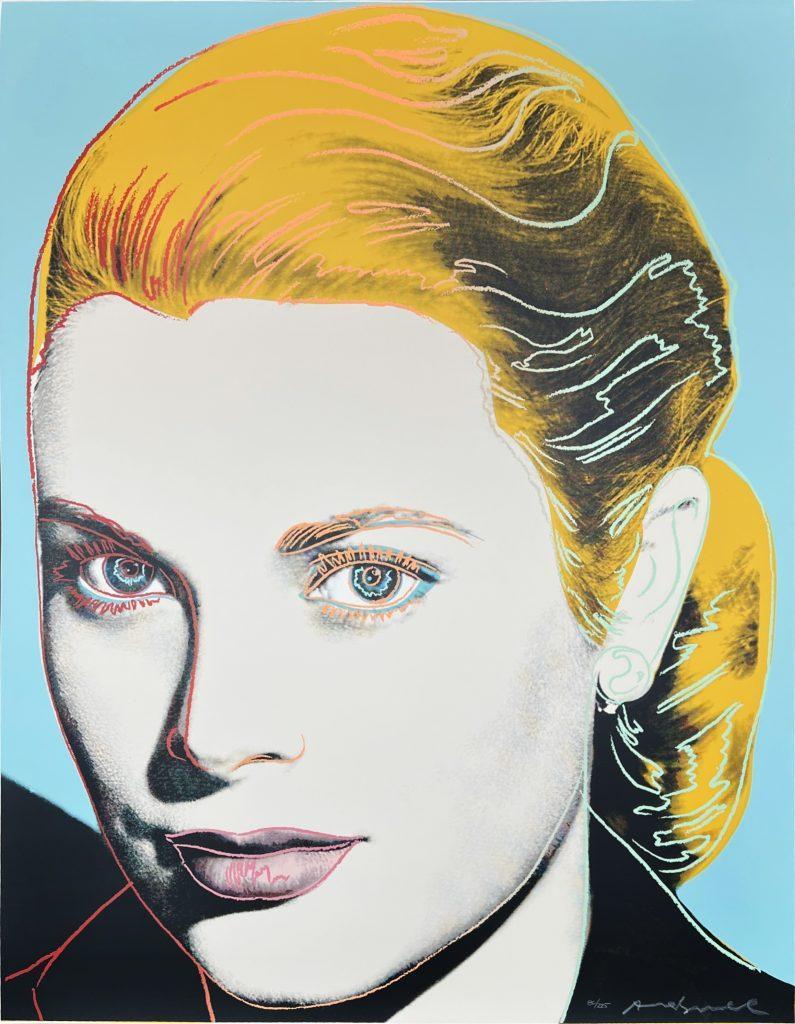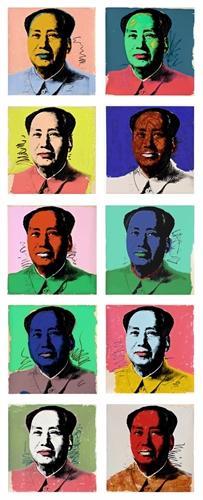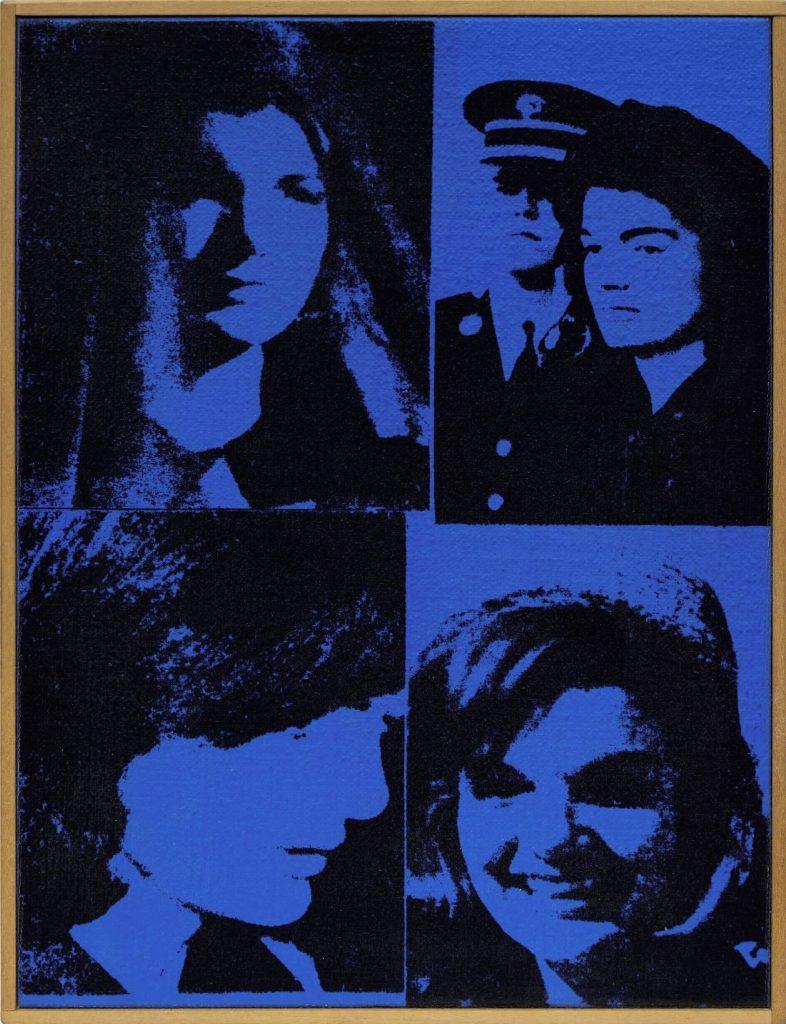(MENAFN- USA Art News) This month, Artnet presents its premier prints & multiples sale, featuring important works by leading artists such as Andy Warhol, Keith Haring, Frank Stella, Wayne Thiebaud, Julian Opie, KAWS, Damien Hirst, Pablo Picasso, Edward Hopper, and more.
Beyond the famous artists behind the works, many of the artworks in the sale feature famous faces, too. We spoke to Conner Williams, Artnet's Head of Prints and Multiples, about Pop art's radical use of icons, as evidenced by some of the exceptional lots in our latest auction.
What is the historical significance of icons in art?
There is a long history of artists using icons as subject matter for paintings, harking back to the original Greek , meaning“image.” While an icon would have been a representation of Christ or other religious symbolism in the 7th century, today the word“icon” has evolved to mean any object or image that holds special significance to the wider public.
How did Pop art explode the modern icon?
Pop art famously took inspiration from icons within television, comic books, movies, advertising, and commercial products. Disseminated widely through mass media and consumerism, these images were instantly recognizable.
America in the 1960s saw a booming popularity in television, which, in turn, created a widespread fascination with celebrities-people were able to view their glamorous lives directly from their living rooms. This public preoccupation with celebrities was echoed in Pop art, as artists portrayed well-known movie stars, musicians, and politicians. Of course, Andy Warhol had a particular fascination with fame, with works of Elizabeth Taylor, Jackie Kennedy, Marilyn Monroe and, in later years, Mick Jagger, Debbie Harry, and Dolly Parton, amongst many others.
How did artists represent their icons?
In the world of Pop art, the use of icons exploded on a much larger scale as artists adopted printmaking techniques. As mechanical processes, printing created an opportunity for artists to produce their images in editions, mirroring the production of mass media.
Warhol's technique played a huge role in the development of the modern-day icon. By working from a photograph of his subject, which he would project onto a wall, Warhol would trace their key facial characteristics and therefore create a very close resemblance of the individual. The icon was therefore instantly recognizable, akin to seeing the figure on the television, in a movie theater, or in a newspaper.
andy warhol, (1984)

Andy Warhol, (1984). Est. $120,000–$180,000.
Grace Kelly was the consummate icon, first as an actress on the silver screens of Hollywood, and later as Princess of Monaco. It's therefore of little surprise that Warhol, always drawn to the flame of fame and celebrity, would depict her in his work.
Warhol completed this stunning portrait of Kelly just two years after her tragic death at the age of 52. With series such as Warhol was drawn to the tragedy that tainted fame, and this work highlights how certain celebrities can be even more iconic posthumously.
This was created for a fundraiser for the Institute of Contemporary Art at the University of Pennsylvania, which hosted the artist's first solo show in 1965-and subsequently launched his career. Kelly herself was born in Philadelphia, and her parents were both actively involved at the University-her mother was the first woman to head the Physical Education Department.
andy warhol, (1972)

Andy Warhol, (1972). Est. $500,000–$700,000.
This set of 10 Mao screen prints were created by Warhol in 1972, the same year President Nixon traveled to China to meet Chairman Mao Zedong to establish closer political ties between the two countries.
Warhol was prompted to create the series by the suggestion of his dealer Bruno Bischofberger: a fitting subject for Warhol's obsession with fame, as magazine had recently stated that Mao was the most famous person in the world. Warhol would go on to create five series of Maos between 1972 and 1973.
Warhol took inspiration from Mao's official portrait within the“Little Red Book” (official title ), which was a publication of 267 aphorisms from the Communist leader. With billions printed and distributed across China, Communist supporters were told to always carry the book with them; the book itself became an icon for China's Communism.
The ultimate icon, Warhol used Mao's already instantly recognizable image to create his screen prints using a strong color palette which married the symbols of political propaganda and the modern day celebrity.
richard pettibone, (1996)

Richard Pettibone, (1996). Est. $30,000–$50,000.
Influential American artist Richard Pettibone is known for his creations of miniature replicas of works by other famous figures, such as Andy Warhol, Ed Ruscha, and Roy Lichtenstein-deliberately choosing artists whose works focuses on replication and seriality, adding an additional layer of irony to Pettibone's appropriations.
This work, created in 1996, is a carefully crafted and meticulous replica of Warhol's famous from 1964. These original works by Warhol visualized newspaper photographs of Jaqueline Kennedy, which showed the moments before and after the assassination of her husband, President John F. Kennedy. By replicating Warhol's iconic images of an iconic individual, Pettibone's work offers commentary on Pop art's long cultural impact.
andy warhol, (1964)

Andy Warhol, (1983). Est. $30,000–$50,000.
Ingrid Bergman, one of the world's most defining actresses, is an instantly recognizable star. An award winner with three Academy Awards and two Emmy Awards, her most famous role was as leading lady in in 1942.
The work by Warhol, titled , was one of a series of three prints commissioned by the Swedish art gallery Galerie Börjeson and printed by Rupert Jasen Smith in New York. Similar to the Grace Kelly print, these prints were created in 1983 as a commemoration to the actress, who passed away in London the previous year.
Published four years before his death in 1987, this series would be one of Warhol's final representations of movie stars.